History
The Maltese archipelago consists of three islands: Malta, Gozo and Comino. Malta, the largest island, is 237 sq. kms in area; Gozo is 68 sq. kms and Comino, 2 sq. kms.
The population numbers circa 400,000. Of these, 28,000 live in Gozo. Comino is only inhabited by a few farmers. Because of their strategic position, Malta and Gozo have been inhabited for the past 7,000 years. The two islands have a long and varied prehistoric period: Neolithic, Copper and Bronze age civilisations lasted more than 4,000 years; one can still admire vestiges of those remote times in form of impressive stone temples, a unique hypogeum and remains of skilful handicrafts.
The first known people to settle in Malta were the Phoenicians, who reached these shores on their trading ventures in the 9th century BC. They were succeeded by their Punic kinsmen, the Carthaginians, who were eventually conquered by the Romans in the 3rd century BC. The Romans governed these islands until the division of the Roman Empire in the 4th century AD.
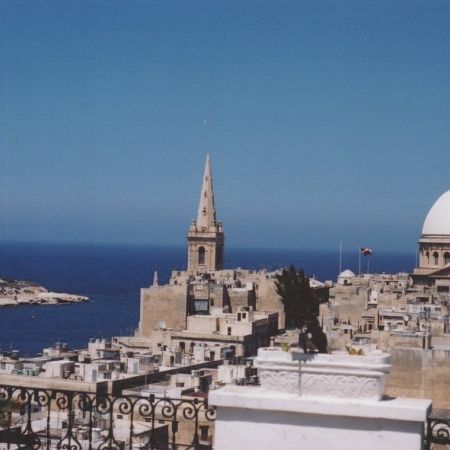
Arabs from North Africa occupied the Islands from the 9th to the 13th century and when the last Arab rulers were driven out in the year 1249, they left behind them notable imprints of their culture on the language of the Maltese people. After the Norman overlords, Swabian and Angevin dynasties ruled for brief periods and at the beginning of the 14th century, the Islands fell under Aragonese domination. In 1530, the King of Spain, Emperor Charles V, granted the Islands on fief to the international Order of the Knights of St. John of Jerusalem.
The Knights administered the Islands for 268 years until 1798, when Napoleon Bonaparte drove them from these shores and occupied the country in the name of the French Republic. Following a brief occupation the French were forced to surrender after two years of a land and sea blockade by combined British and Maltese forces, and in 1800, Malta became a part of the British Empire.
In 1964, Malta attained its Independence. It remained as a realm of Queen Elizabeth II represented by a Governor General until ten years later. In 1974, it was declared a Republic within the Commonwealth with a President as head of state. Until the 1960s, the Maltese economy depended mostly on the British services and the Naval Dockyard. After independence, industry and tourism advanced at a fast pace, and at present Malta and Gozo have established a good industrial base and flourishing tourist enterprises. On the 1st of May 2004, Malta was one of the 10 countries which joined the European Union.
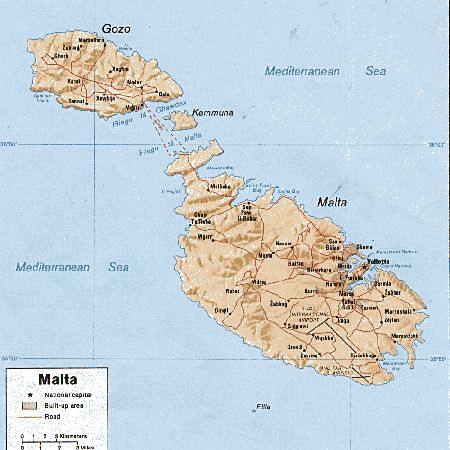
The people speak their own tongue - Maltese, a language of Semitic origin. Through the ages, many foreign words, particularly Italian, became part of the language, and Maltese is the only Semitic language written in Latin characters. English is one of two official languages and is widely spoken in Malta and Gozo. The official religion is that of the Roman Catholic Church, and the majority are regular church-goers. There are no other denominations of substantial size among the Maltese, but churches of other denominations are also to be found, for religious needs.
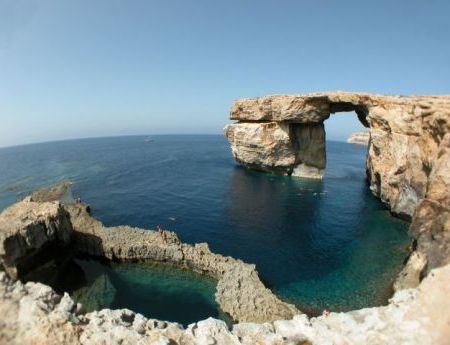
There is no shortage of accommodation in Malta and Gozo. The best value is probably to be had at four star hotel and self catering apartments, where standards are high and prices reasonable. During high season, however, accommodation can be limited and prices rise accordingly. Bargain hunters should avoid June through to September inclusive, and instead visit in the shoulder months.
Booking the right accommodation to suit your requirements is not difficult either - there are plenty of online resources offering anything from hostel-style lodging through to 5-star deluxe hotels and luxury villas, properties generally accompanied by detailed descriptions and photos.While the Maltese Islands offer reasons to visit at any time of year, as indicated above summer is considerably more hectic and it is highly recommended to book accommodation as early as possible. This is particularly true of family-friendly lodging such as the larger apartments and villas, especially on the island of Malta.
PLACES TO GO
Gozo : Back when Gozo was called Ogygia the Greek hero Ulysses spent seven years on the island. Today we think four or five nights is just about right on the Isle of Calypso. Reached by car ferry from Valletta or Cirkewwa on Malta Gozo has rugged sandy beaches and rolling hills. The largest city is Victoria (locally called Rabat). Visit the Gozo Museum (historical displays) the Gozo Crafts Centre (good selection of local handicrafts) and northeast of town the Citadel/Gran Castello. The citadel worth a visit primarily for its unparalleled views consists of a restored Norman house cathedral and bastions. Other island attractions include Gozo Heritage a series of life-size dioramas depicting the island's past; pretty Xlendi Bay (on the western coast); and Ramla Bay the reputed Calypso Cave (near red-sand Ramla Bay).
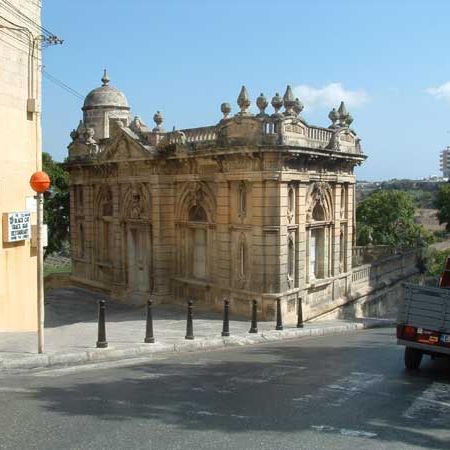
Valetta : Malta's capital city called the City of Knights dates from the 16th century. Valletta (pop. 109 000) was one of Europe's first planned cities with building codes a grid street pattern and garbage and sewage systems. Located on a peninsula Valletta boasts two excellent harbors: Marsamxett Harbour and the Grand Harbour. The fairly compact city can easily be seen in one day although we suggest staying two nights. We like to start by visiting the Upper Barrakka Gardens for a great overview and then follow up by getting a closer view from the harbors (take the inexpensive two-hour cruise).
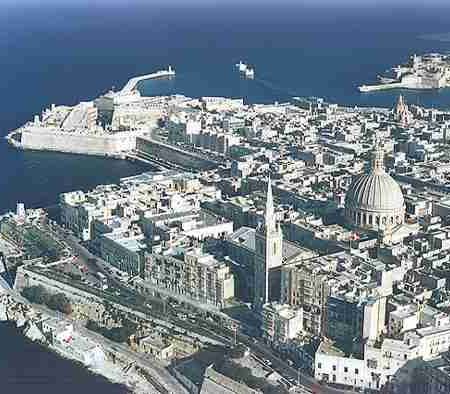
Valletta seems to host a museum in every block of the capital. Some of our favorites are the national museums of fine arts (in an 18th-century palace) and archaeology and the museum adjoining the elaborately decorated St. John's Co-Cathedral (the church's marble floors are unforgettable). To better understand the martial history of Valletta visit the 16th-century Grand Masters Palace and Armory and the National War Museum. Go on to the Lascaris War Rooms which were bomb-proof headquarters for the British air force during World War II. When you tire of museums spend time visiting shops strolling the city's ramparts or perusing the Malta Government Crafts Centre (where local handicrafts are on display and sale).
Just outside town near Floriana is the fascinating Argotti Botanic Gardens-a good cacti collection. Across the Grand Harbour is the Cottonera the generic name for three "suburbs" of Valletta. The three cities Vittoriosa/Birgu Senglea Isle and Cospicua are notable for their medieval homes churches palaces and fortifications. Be sure to visit the Church of St. Lawrence the Maritime Museum Ft. St. Angelo (key defensive point during the Great Siege of Malta) and the Inquisitor's Palace (tour its courtrooms and-to see some medieval graffiti-its dungeons).
The Knights of Malta were segregated by place of origin and assigned to neighborhoods called langues. A number of their auberges (the buildings in which they once lived) can still be seen. These structures are concentrated in an area known as the Collachio.
Sliema : Sliema is pretty much a suburb of Valletta - but a suburb with a lot of history. Sliema is located between La Valetta where you find most of the historic sights and St Julian where you find the best nightlife of the island. Sliema is a perfect place to explore both. Here you find many hotels and shops. It's probably the best base for exploring the capital region.
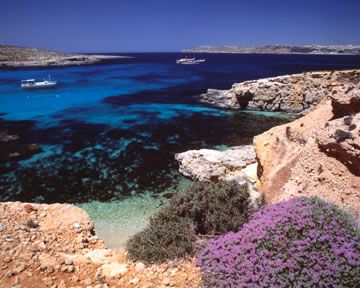
Comino : For anyone who finds Gozo's tranquil paradise still a little too hectic, there is nearby Comino, an island only 2 sq. km in area, with one hotel. The island is a haven for anyone interested in water sports with ample room for everyone, whether a professional scuba diver looking for excitement in the depths or a child learning to use a snorkel in safety. Of spectacular beauty is the Blue Lagoon with its turquoise waters surrounded by a sun drenched coastline.
Naxxar : The Naxxar Locality is spread over an area of eleven kilometres squared and has a population of over eleven thousand persons. The whole locality comprises the Naxxar centre, Sghajtar area, Santa Marija tax-Xaghra, San Pawl tat-Targa, Birguma, Maghtab, Salina, Bahar ic-Caghaq and part of Madliena. Palazzo Parisio was built by Marquis Giuseppe Scicluna. Before, this site was occupied by a summer residence by the Jesuit Community. After buying the property in 1898, Marquis Scicluna altered it into its present state, purchased more land at the back and converted it into a big garden. All this was done between 1898 and 1906.
All the artistic designs were done by Italian artists who were brought to Malta on purpose. The paintings on the ceiling are the works of the Italian artist Filippo Venuti.
Marquis Scicluna used this palazzo as his private residence for only a short period, till 1907. After the death of the Marquis, the Palazzo stopped being used as a private residence and was changed into a tourist attraction and as a wedding hall. In 1962, Marquis John Scicluna let a significant part of the gardens of the Palazzo to the International Trade Fair Corporation, and which continues to be used by the same Corporated to the present day.

The Naxxar Church was made a Parish by Bishop de Mello in 1436 and the villages of Mosta and Gharghur were subject to it. In fact Bishop De Mello had listed it as one of the ten parishes of Malta and it was the first parish dedicated to Our Lady after that of the old Cathedral. In 1575, the matrix of Naxxar had under its control a total of 36 churches - 14 in Naxxar, 5 in Gharghur, 12 in Mosta and 5 in the neighbourhood of these villages. The church, as we know it today, was built between 1616 and 1630 when there were 1200 inhabitants in Naxxar and it was felt that a larger church was needed. The design was made by the architect Tommaso Dingli, one of the best architects of the time, whilst the Parish Priest was Father Gakbu Pace. The choir and the area around it was redesigned in 1691 on the design of Lorenzo Gafa', the same architect who had designed Mdina Cathedral. The Parish Church was solemnly consegrated by Bishop Alpheran on the 11th December 1732.
The church has a choir, two transepts and a nave and is 130 feet long. The width of the transept is 94 feet and the nave 30 feet. The large bell was made by the founder Toni Tanti in 1840 and cost 225 pounds. The facade of the church has two clocks, one showing the actual time whilst the other is a painting and shows the time as a quarter to eleven (11.45).
The main painting shows the Birth of Our Lady which is attributed to the school of Mattia Preti (1613-1699) whilst at the side there are two paintings by Stefano Erardi (1650-1733) which show the Flight to Egypt and the Adoration of the Magi. Other paintings which show the Madonna and Child, St Cajetan, St Aloysius Gonzaga, Our Saviour and Our Lady of Sorrows are the work of the Maltese painter Frangisku Zahra (1680-1765). In the sacristy hangs the antique painting showing Our Lady of the Rosary which was painted on wood by Gio Maria Abela in 1595.
The main door, which is made of bronze, is dated 1913 and is the work of Pio Cellini. The door is made up of four main panels depicting the coat of arms of Our Lady, Patroness of Naxxar; the village coat of arms; the coat of arms of Pope St Pius X and the coat of arms of the family Zammit who were the benefactors of this door. In 1952 this door was dismantled, and renovated and cleaned by the blacksmith Mastru Lucens Agius. The expenses involved were once more paid for by the same family Zammit.
The statue of the Vitorja, which feast is celebrated on the 8th September, was imported from Rome whilst the statues of the Good Friday Procession are the work of a Maltese craftsman. Naxxar was one of the first villages which had the statues of the Passion of Our Lord and in fact it is believed that the procession started being held just after 1750. On the 9th November 1787, the body of the martyr St Vittorio was brought from the cemetry of St Calepodio of Rome and is found in the altar in the choir.
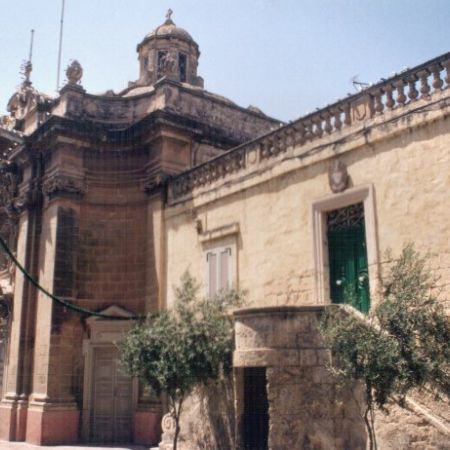
Tixxen :
Tarxien is a very old village in the south-eastern part of Malta which is very remowned for its heritage. The most famous of all are the Neolithic Temples that lie in the heart of the village. Recently, this heritage jewel has been restored as it is one of the oldest temples in the whole world, dating back much before Stonehenge. In the temples, one can still see various dolmens and menhirs as well as the staute of the godess of fertility or as the locals call it "Il-Mara il-Hoxna" (meaning "The Fat Woman" obviously due to the fact that in older times obesity was a symbol of fertility). In this wonderful village one may see other great architectural jewels like the Church dedicated to the Resurrection of Christ (or "Knisja ta' l-Erwieh" in Maltese) right next to the temples as well as the tradiotional Parish Church further down the road.

































